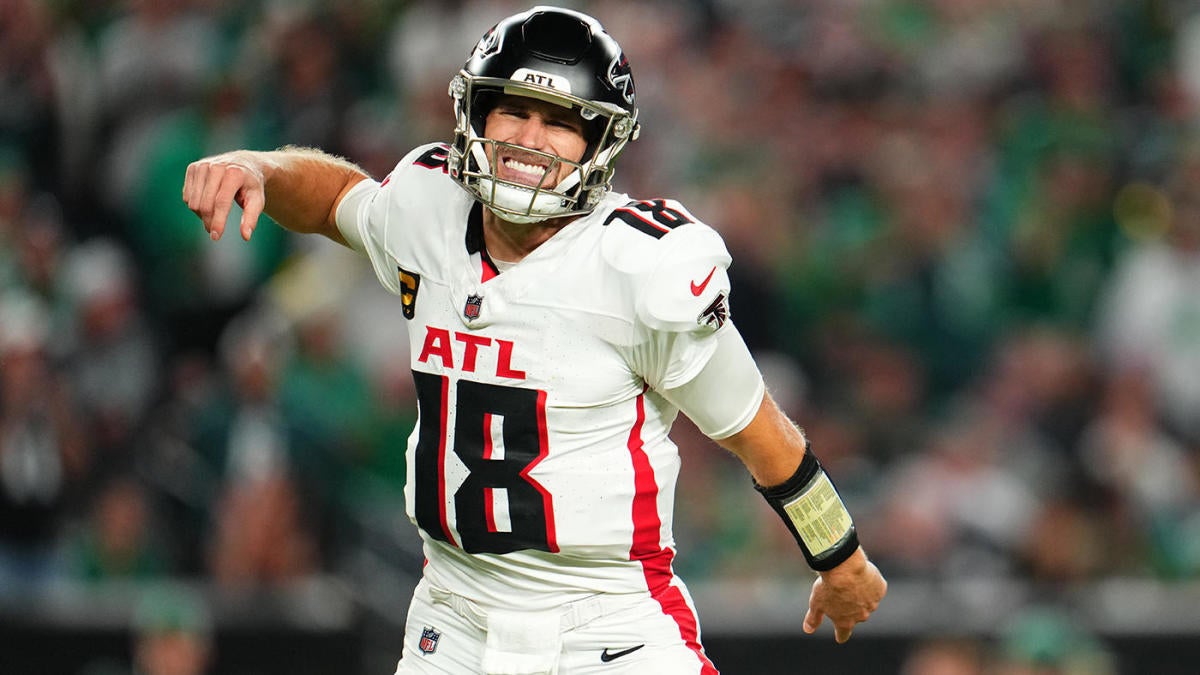Besides Aaron Rodgers‘ trade to the Jets, there probably hasn’t been a bigger 2023 NFL offseason storyline than the resistance of the running back. From Dalvin Cook declining a pay cut in Minnesota and Saquon Barkley settling for a slight pay bump with the Giants, to Josh Jacobs cold-shouldering the Raiders and Jonathan Taylor demanding a trade from the Colts, not even the most accomplished ball carriers have been immune to the diminished market of an increasingly devalued position.
But what does it mean for the next generation? Is the evaporation of lucrative RB deals a legitimate sign of what’s to come? Or is this merely a phase? What can this year’s first-round RBs, or other young backs, expect of the market in the years to come?
Let’s start with the reality: Among all current RBs, only eight (barely) earn more than $10 million per year. On its face, this is indicative of the position’s decreased importance relative to other spots; more than 30 wide receivers, for example, clear the $10M bar, as do 25 pass rushers and almost 30 offensive tackles. Of the eight RBs who make $10M annually, three are on one-year contracts. Only two, meanwhile, make $15M+ per year: the 49ers‘ Christian McCaffrey and Saints‘ Alvin Kamara.
If we can draw anything from this, besides the fact RBs are generally considered replaceable, it’s that teams are willing to pay a premium for a very specific type of back: the do-it-all dual threat. It’s probably not a coincidence that McCaffrey and Kamara, the two anomalies in the RB market, have each logged four different seasons with at least 80 catches. No one else has matched that kind of pass-catching production. Only the Chargers‘ Austin Ekeler comes close, but consider that, in roughly the same number of career starts, he’s also had 1,400 fewer rushing yards than Kamara.
Pick Six Newsletter
Crafted By The Best NFL Experts
Get the day’s big stories + fun stuff you love like mock drafts, picks and power rankings.
Other RBs, from Cook to Taylor to Derrick Henry to Nick Chubb, may be elite runners with occasional big-play pop out of the backfield. But as more traditional workhorses, they’ve (at least temporarily) maxed out on deals averaging around $10M-$12M per year. In a passing league, teams increasingly — and arguably wisely — prioritize the trenches while making lower-risk bets in the backfield. The most recent Super Bowl teams are a prime example: The Chiefs won it all with seventh-round rookie Isiah Pacheco alongside Patrick Mahomes and an expensive offensive line, and the runner-up Eagles, who’ve sported an elite run game and O-line for years, just let starter Miles Sanders walk to gamble on D’Andre Swift and Rashaad Penny.
All that said, it’s hard to foresee many of the next-gen backs — even recent rookie standouts like the Seahawks‘ Kenneth Walker III, the Jets’ Breece Hall or the Texans‘ Dameon Pierce — cashing in early on multiyear extensions, let alone market-shifting ones. That is, unless they’ve settled into clearly defined secondary roles, as pass-catching specialist Nyheim Hines once did with the Colts. There’s simply little evidence teams will suddenly start paying for traditional RBs — even the gifted ones — in a league where non-traditional backs are the true prize. As Derrick Henry said recently, you can run for 2,000 yards, but the reality of today’s NFL, where freshness and dynamism is key, is that decision-makers will be more concerned with how many carries it took to get there.
Right or wrong, this stacks the odds against most of the RBs with otherwise promising outlooks, be it Hall or Walker, who must stay healthy to justify heavy workloads; Pacheco or James Cook, who are bound to crowded offenses built around elite passing games; Javonte Williams or J.K. Dobbins, who are already fighting durability questions. That’s not to say any of these RBs can’t or won’t stick. In fact, there might not be a better time for “second-rate” backs, considering how many teams deploy full-on rotations. It’s just that, if you’re looking for candidates to truly reshape the RB market up top, they are unsurprisingly few and far between.
The best bets to do that, of course, are those capable of transcending the traditional mold. If the market for RBs won’t change, then it stands to reason the RBs must. After all, if teams are all too eager to reallocate RB dollars to, well, every other position, then a market-shifting RB must be the equivalent of a peak-level Kamara or McCaffrey — just as, if not more, special as a weapon in the pass game than on the ground. This year’s first-round picks — Bijan Robinson (No. 8, Falcons) and Jahmyr Gibbs (No. 12, Falcons) — have some of the multipurpose electricity that could very well make them a part of that class. Another up-and-coming consideration might be the Jaguars‘ Travis Etienne Jr., a 2021 first-rounder who had 1,400 scrimmage yards in his debut.
Now, becoming a dual-threat superstar is far easier said than done. But until a monumental shift occurs, either in the philosophy of most modern NFL offenses or the next collective bargaining agreement between players and team owners, that’s the reality.
Go to Source
Author: Cody Benjamin
August 1, 2023 | 8:35 am
































